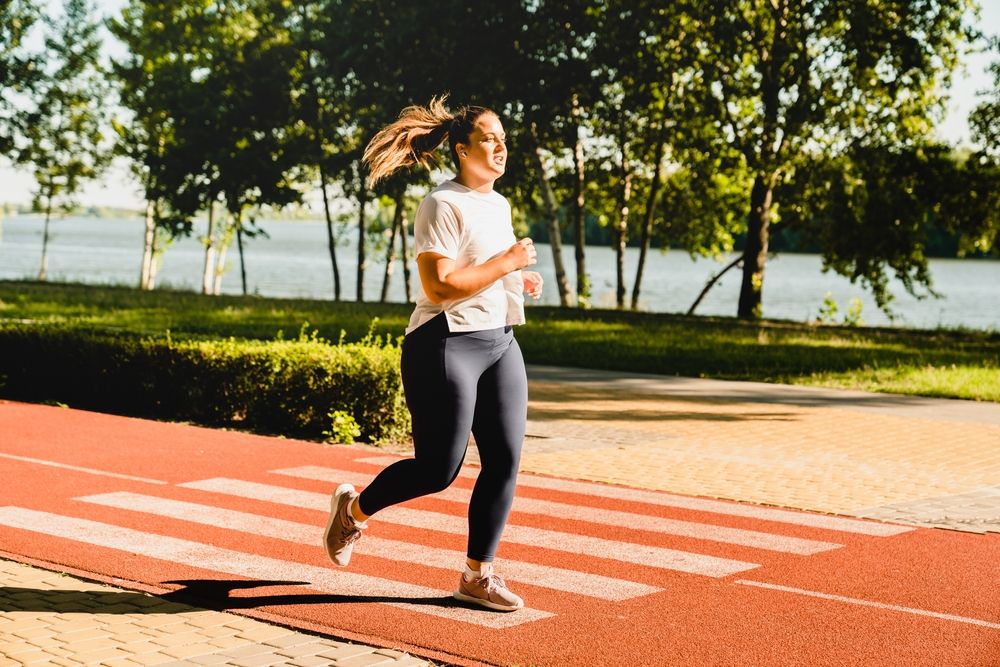
As you age, staying active is vital for maintaining health, enhancing mobility, and managing weight. While high-impact exercises like running or jumping may become harder on your joints, you can still enjoy a challenging and effective workout routine with low-impact exercises. These workouts offer numerous benefits, including fat loss, improved cardiovascular health, and stronger muscles, all while minimizing stress on your body. Whether your goal is to increase flexibility, build strength, or improve endurance, low-impact exercises are an essential part of a balanced fitness plan.
Low-impact workouts also combat the natural effects of aging, such as muscle loss and reduced bone density, which can lead to weight gain and decreased overall health. Building lean muscle is especially crucial, as it boosts metabolism, increases energy, and supports weight-loss efforts. Activities like walking, swimming, and resistance training are not only effective for maintaining strength and flexibility but also enhance balance and joint health—key factors for staying active and independent as you age.
To get the most out of your fitness routine, it's essential to mix up your exercises so that they remain engaging and effective. Each exercise offers unique benefits, from walking and swimming to strength training and Pilates. With the workouts and tips in this guide, you'll have everything you need to start slimming down, boosting your metabolism, and improving your overall health—without putting unnecessary strain on your body.
Exercise #1: Walking

Walking is an excellent low-impact exercise that supports fat loss, boosts metabolism, improves cardiovascular health, and enhances bone density, all without putting undue strain on the joints. Its adaptability makes it suitable for all fitness levels, offering a range of options to suit your goals.
Types of Walking Workouts:
- Steady-State Walking: Maintains a consistent pace to improve endurance and burn fat steadily.
- Interval Walking: Alternates between brisk and slow walking, increasing calorie burn and enhancing cardiovascular fitness.
- Incline Walking: Adds an uphill element, targeting the lower body for increased strength and calorie expenditure.
- Power Walking: Incorporates a faster pace and arm movements, burning more calories while boosting endurance.
How to Walk Effectively:
- Walk briskly to elevate your heart rate while keeping it comfortable enough to hold a conversation.
- Focus on posture: keep shoulders back, engage your core, and swing your arms naturally for balance and momentum.
Quick Walking Workout:
- Warm-Up: 5 minutes at a moderate pace.
- Interval Walking: 20 minutes alternating 1 minute of brisk walking with 2 minutes of slower walking.
- Cool Down: 5 minutes at a slow, relaxed pace.
This simple yet effective routine can help you burn calories, improve endurance, and stay active in a joint-friendly way.
Exercise #2: Swimming
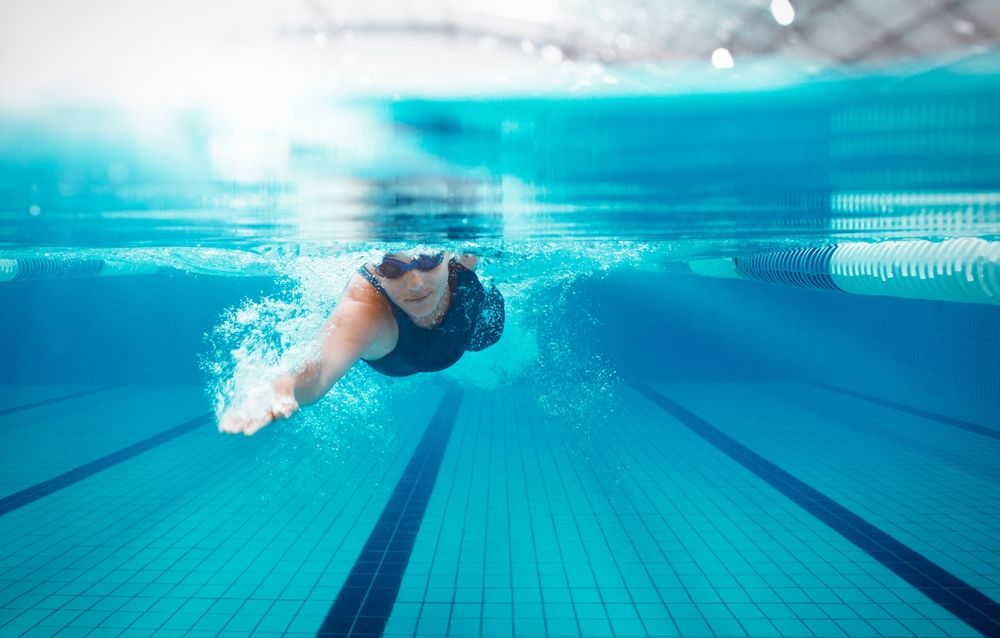
Swimming provides a full-body workout with minimal joint impact, thanks to the buoyancy of water. This low-impact activity builds strength and endurance through water resistance while promoting calorie burn and fat loss. Additionally, swimming enhances flexibility and cardiovascular health, making it an excellent choice for overall fitness.
How to Swim Effectively:
Incorporate a variety of strokes, such as freestyle, backstroke, and breaststroke, to engage different muscle groups. Focus on controlled breathing and smooth, continuous movements to maximize efficiency and reduce fatigue.
Quick Swimming Workout:
- Warm-Up: 5 minutes of light freestyle swimming to loosen up your muscles.
- Main Set: 15 minutes alternating between 2 fast-paced laps and 2 slower recovery laps.
- Cool Down: 5 minutes of gentle backstroke or breaststroke to relax and stretch your muscles.
This dynamic workout boosts strength, endurance, and cardiovascular health while being easy on your joints, making it perfect for all fitness levels.
Exercise #3: Cycling (Stationary or Outdoor)
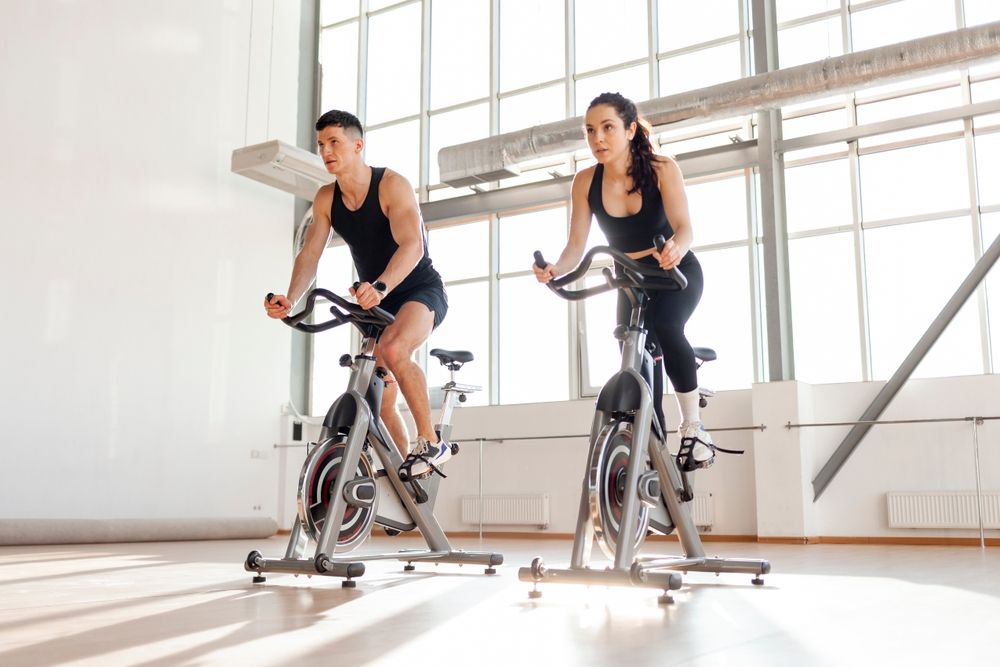
Cycling is a fantastic low-impact cardio exercise that improves heart health, strengthens the legs, hips, and core, and efficiently burns calories. Its joint-friendly nature makes it especially suitable for individuals with knee or hip concerns.
How to Cycle Effectively:
- Adjust the resistance to a level that challenges your muscles without causing strain.
- Maintain an upright posture with a slight bend in your elbows, keeping your back straight and avoiding hunching over the handlebars.
Quick Cycling Workout:
- Warm-Up: 5 minutes of cycling at a low resistance to ease into the workout.
- Main Set: 20 minutes of intervals, alternating 1 minute of hard pedaling with 2 minutes of slower recovery pedaling.
- Cool Down: 5 minutes of easy cycling at a relaxed pace to bring your heart rate down.
This workout combines cardio and strength benefits while being gentle on your joints, making it an excellent addition to your fitness routine.
Exercise #4: Yoga
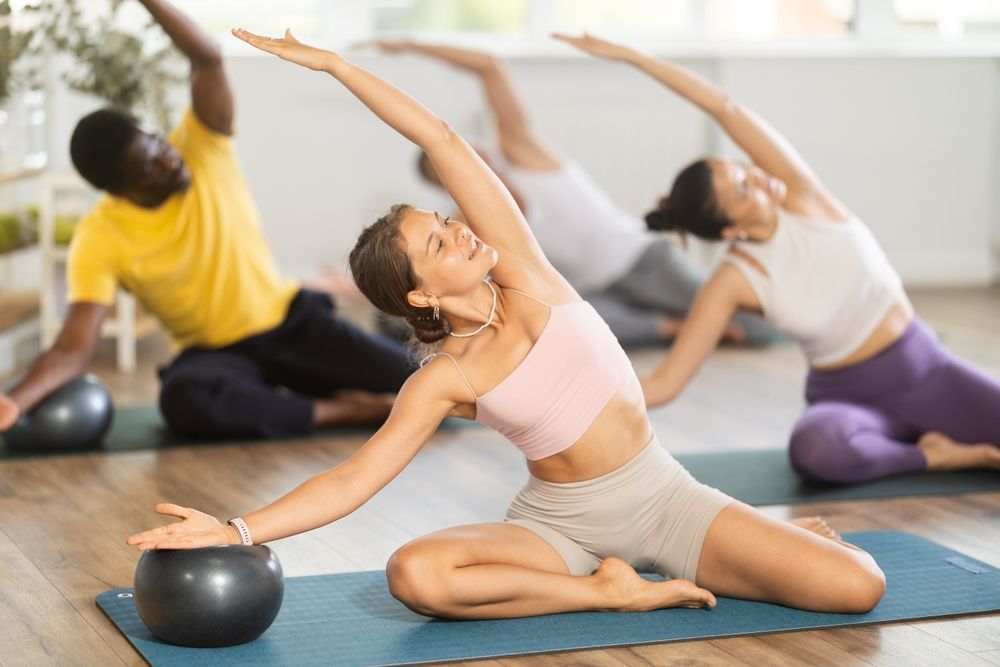
Yoga enhances flexibility, strength, and balance while reducing stress, which can positively influence eating habits and help lower cortisol levels associated with weight gain. Additionally, it improves joint mobility and can ease aches and pains, making it especially beneficial as you age.
How to Practice Yoga Effectively:
- Prioritize proper alignment in each pose, engage your muscles, and focus on deep, steady breathing.
- Start with foundational poses like Downward Dog or Warrior I to build strength and flexibility gradually.
Quick Yoga Routine:
- Warm-Up: Perform 5 rounds of Sun Salutations to gently warm up your body.
- Main Poses: Hold Warrior II, Chair Pose, and Plank Pose for 30 seconds each, focusing on strength and stability.
- Cool Down: Finish with Child’s Pose and Cat-Cow stretches to relax and release tension.
This routine combines strength, flexibility, and stress relief, offering a holistic approach to supporting your overall well-being and weight-loss goals.
Exercise #5: Resistance Training (Dumbbells and Weight Machines)
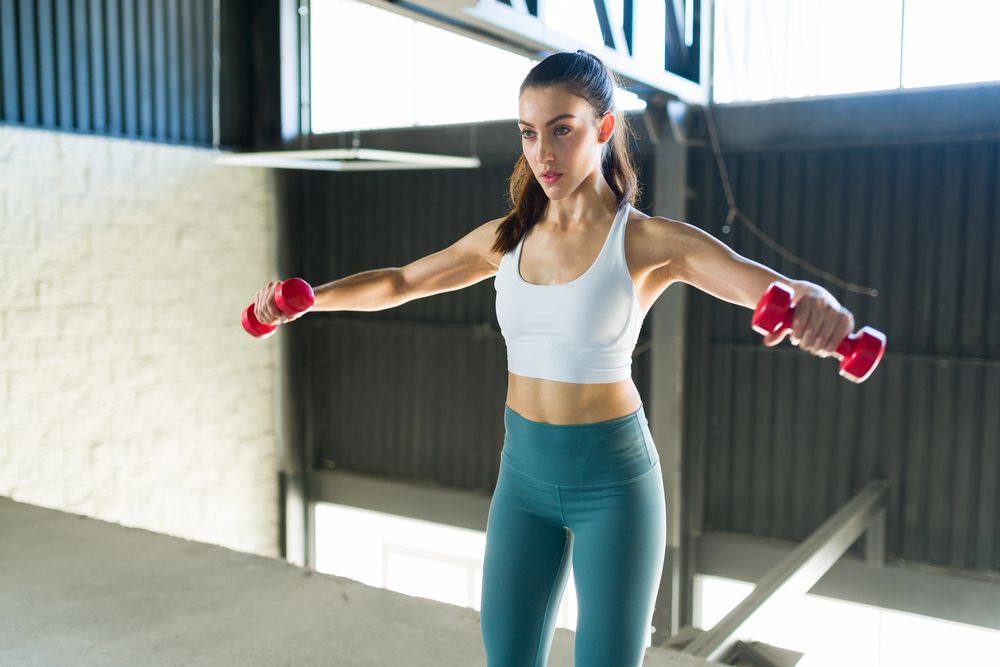
Strength training is a powerful way to build lean muscle mass, which increases metabolism and supports sustainable weight loss. Dumbbells help improve functional strength and coordination, while weight machines offer controlled movements to safely target specific muscle groups.
To enhance weight-loss efforts, you can tailor your resistance training with different approaches:
- Straight Sets: Focused reps for muscle building.
- Intervals: Alternate strength exercises with rest to boost calorie burn.
- Circuits: Perform exercises with minimal rest to maintain high intensity and maximize fat loss.
These strategies help maintain muscle, boost metabolism, and increase calorie expenditure during and after your workouts.
How to Strength Train Effectively:
- Begin with lighter weights and increase gradually as you gain strength.
- Prioritize proper form to prevent injuries by engaging your core and avoiding momentum when lifting.
Quick Strength Training Routine:
- Warm-Up: 5 minutes of light dynamic stretches to prepare your muscles.
- Main Workout: Complete 3 rounds of the following:
- Dumbbell Squats: 12 reps
- Chest Press (using dumbbells or a machine): 12 reps
- Dumbbell Rows: 12 reps per side
- Rest 1–2 minutes between rounds.
This balanced workout builds strength, burns calories, and supports your weight-loss goals effectively.
Exercise #6: Elliptical Training
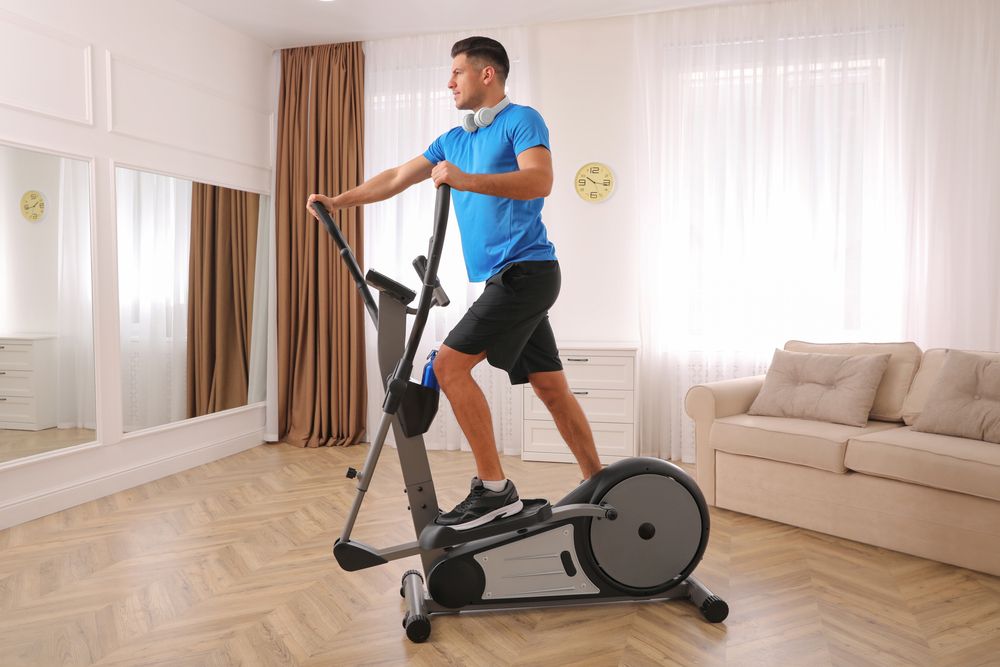
The elliptical machine provides a full-body workout that effectively burns calories, builds muscle strength, and improves cardiovascular health—all while minimizing the impact on your joints. This makes it an ideal choice for those with joint concerns or looking for a low-impact alternative to running.
How to Use the Elliptical Effectively:
- Set the resistance to a moderate level to challenge yourself without overexertion.
- Maintain an upright posture, lightly grip the handles, and keep your feet flat on the pedals.
- Engage your core throughout the workout to enhance stability and maximize effectiveness.
Quick Elliptical Workout:
- Warm-Up: 5 minutes at a low resistance and moderate pace to ease into the session.
- Main Set: 15 minutes alternating between:
- 2 minutes of moderate effort.
- 1 minute of high resistance/intensity for a challenging push.
- Cool Down: 5 minutes at a low resistance and relaxed pace to wind down.
This dynamic routine combines cardio and strength, helping you torch calories while being gentle on your joints.
Exercise #7: Rowing Machine
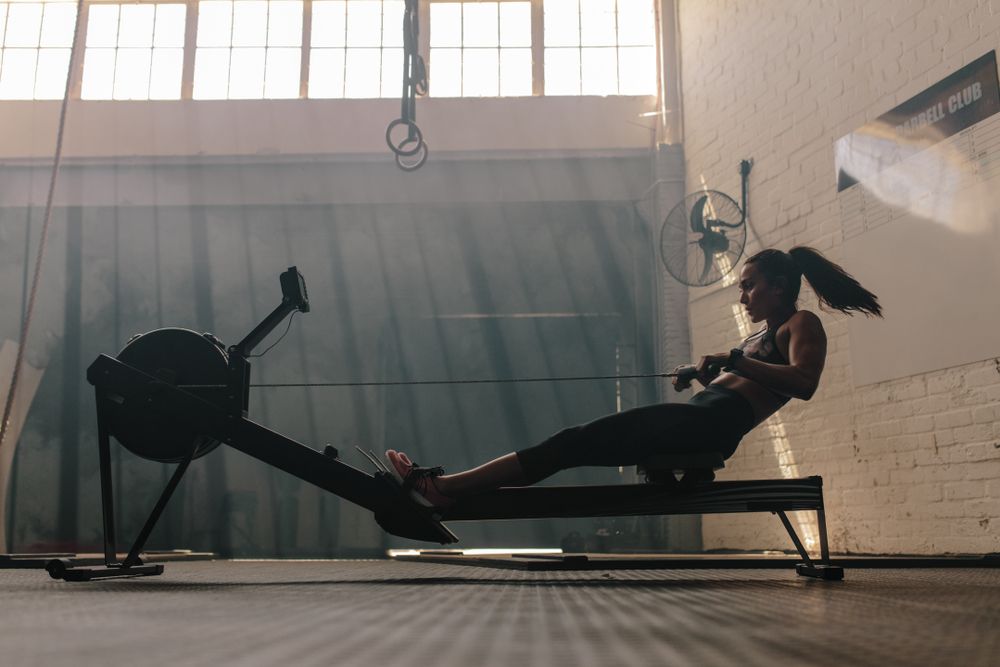
Rowing is a highly effective low-impact exercise that enhances both strength and cardiovascular fitness. It engages your entire body, including the legs, core, and upper body, while its smooth, controlled motion minimizes stress on the joints. This makes rowing a powerful calorie-burning workout suitable for various fitness levels.
How to Row Effectively:
- Prioritize proper form: push through your legs, lean back slightly with your core engaged, and finish by pulling with your arms.
- Keep each stroke controlled and fluid for maximum efficiency and to prevent strain.
Quick Rowing Workout:
- Warm-Up: 5 minutes at a steady, moderate pace to prepare your muscles.
- Main Workout: 20 minutes of intervals:
- Row hard for 30 seconds to elevate your heart rate.
- Row gently for 1 minute to recover.
- Cool Down: 5 minutes of slow, relaxed rowing to bring your heart rate down.
This workout blends strength and endurance training, offering a full-body calorie burn while being gentle on your joints.
Exercise #8: Pilates
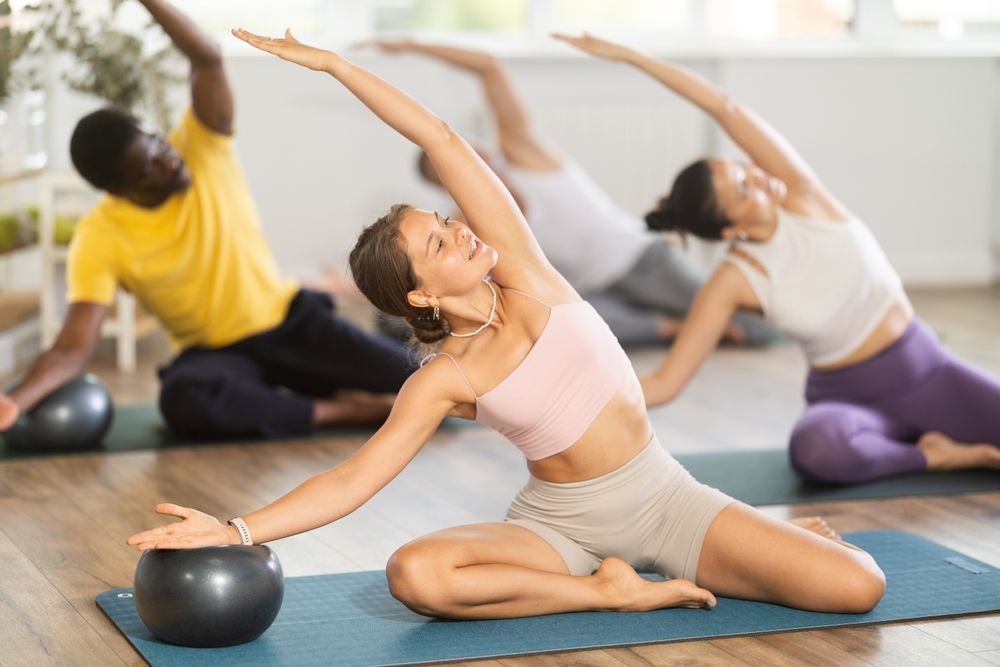
Pilates is a gentle, low-impact exercise that strengthens the core, improves posture, and enhances flexibility. It’s an effective way to reduce the risk of injury, challenge your muscles, and burn calories. By promoting lean muscle tone, Pilates supports weight loss and builds functional strength for everyday activities.
How to Practice Pilates Effectively:
- Perform each movement slowly and with control, prioritizing precision over speed.
- Focus on engaging your core and maintaining deep, steady breathing throughout each exercise.
Quick Pilates Workout:
- Warm-Up: 5 minutes with pelvic tilts and bridges to activate your core and hips.
- Main Routine: Complete 3 rounds of the following exercises:
- The Hundred: Hold for 60 seconds to engage your core and build endurance.
- Leg Circles: 10 controlled reps per side to strengthen and improve hip mobility.
- Side-Lying Leg Lifts: 10 reps per side to tone the outer thighs and glutes.
- Cool Down: Spend a few minutes stretching with spinal twists or forward folds to relax your muscles and increase flexibility.
This Pilates routine is ideal for building strength, improving flexibility, and supporting weight-loss goals in a low-impact, joint-friendly way.

